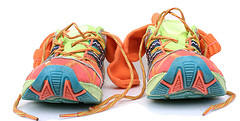If you love running and constantly try to beat your own best time, online running logs are incredibly helpful tools. Even if you’re a beginner runner, these handy logbooks can help you to keep track of your runs and praise yourself for a week with no days off. Here are two online running logs to help you find the motivation to keep on running.
LogYourRun
If you’re simply looking for a straightforward, no-nonsense running log, this one is for you. LogYourRun offers an exercise log where you can enter your runs, track your weekly times, distance, and pace, and even keep track of your weight. It offers maps of the best running routes in your area, and the impressive import feature allows you to import data from your mobile device or other websites.
MapMyRun
Specifically tailored toward your area, MapMyRun is a mobile app and online website that helps you train for an upcoming race or simply compare your personal runs. It allows you to create a challenge and alerts you once you’ve met your goal, and it also includes pre-made training plans that act just like a running coach. With a simple interface and a handy mobile platform, MapMyRun is a great tool for any tech-savvy runner.

![By U.S. Navy photo by Photographer’s Mate 3rd Class Justin Proulx. [Public domain], via Wikimedia Commons](http://www.respage.com/cms/img/1744.jpg)


 Equal Housing Opportunity
Equal Housing Opportunity